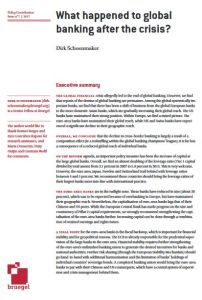
Read or listen offline
résumé audio créé automatiquement
1×
résumé audio créé automatiquement
Recommendation
In the years following the 2008 financial crisis, pundits and policy analysts decried the implosion of the global banking sector. But a fresh look at the international footprint of the largest global systemically important banks (G-SIBs) reveals a more nuanced picture of the current banking architecture. Professor Dirk Schoenmaker dissects the latest data and provides analysis on the influence, scale, scope and state of the G-SIBs from a global perspective. getAbstract recommends this detailed and expert report to banking professionals and those interested in assessing the condition of global financial institutions.
Take-Aways
About the Author
Dirk Schoenmaker is a senior fellow at Bruegel.






















Comment on this summary or Démarrer une discussion